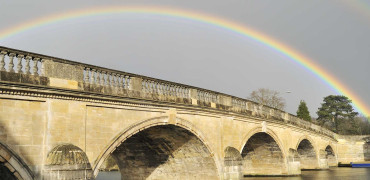Reading the 2024 BESA Top 30 Contractors Report, one word stands out: Retrofit.
The refurbishment and refitting of buildings are key growth areas for UK construction, providing opportunities for the M&E sector.
The main driver for this wave of building upgrades is sustainability. There is now little doubt that legislation such as Minimum Energy Efficiency Standards (MEES) is driving genuine change across the property sector.
Current proposals are that by 2027, the minimum commercial EPC will be C, rising to a B in 2030 – and that’s making many landlords look closely at how they can keep their buildings commercially viable.
Some estimates are that we’ll have to double the current pace of work.
Demanding sustainability
Equally, public sector buildings are under pressure to meet carbon reduction and energy efficiency targets as part of the UK government’s drive to net zero carbon emissions.
In addition, commercial tenants across all building types, from offices to retail and science, are demanding sustainability features in the buildings they lease.
Increasingly, tenants will pay higher rents for buildings with strong environmental credentials such as a good BREEAM or NABERS (Offices) rating.
So, faced with a valuable asset falling into obsolescence, it’s easy to see why property owners and investors are focused on making upgrades.
And many of these will be in HVAC systems. In the BESA report, Remi Suzan, managing director of Gratte Brothers, notes: “Adding value to property assets will be the driving force for making the right investments in building services retrofits and upgrades.”
M&E at the front end
M&E contractors are therefore very likely to be at the front end of building retrofit projects, possibly providing advice directly to clients about the most suitable technologies for their buildings.
For example, in both the public and private sectors, there is a trend to decarbonise buildings, removing all on-site fossil-fuel heating systems such as gas boilers. Many clients are considering a switch to heat pump technology in some form, or a switch to modern VRF systems such as the Mitsubishi Electric Hybrid VRF solution.
As well as helping to meet targets on energy and carbon, HVAC retrofits have the added benefit that they can be managed at a level that suits each project and client. The UK Green Building Council (UKGBC) refers to ‘deep’ and ‘light’ retrofits. A deep retrofit might involve removing a building’s entire air conditioning system to replace it; a lighter approach might mean taking a floor-by-floor staged approach to refurbishment.
Net zero experts
But retrofitting has its challenges. Not least of these is finding space for new equipment in existing plantrooms; or ensuring that new equipment is sized correctly to meet current and future HVAC requirements, for example.
Mitsubishi Electric has worked with many of our contracting partners to help them deliver successful retrofits. We offer training on all our products, of course, but also have our own Sustainable Construction Team. These experts can help with net zero targets, decarbonisation and provide advice on a range of technical issues.
We have also produced a series of guides on issues such as whole life carbon in buildings, using new low-GWP refrigerants and retrofitting. Check out our CPD library to find more information on these key topics.
Double the pace of work
As we go forward into the rest of the 2020s, retrofitting will continue to be a major source of work for M&E contractors. In fact, the pace of retrofit must increase if the built environment is to meet targets on carbon reduction.
Some estimates are that we’ll have to double the current pace of work.
This creates a significant opportunity for those who are ready for the new era of low-carbon buildings, and Mitsubishi Electric is here to support those who want to help deliver that future with the latest HVAC systems.
Dave Archer is Business Manager - Influenced Sales




